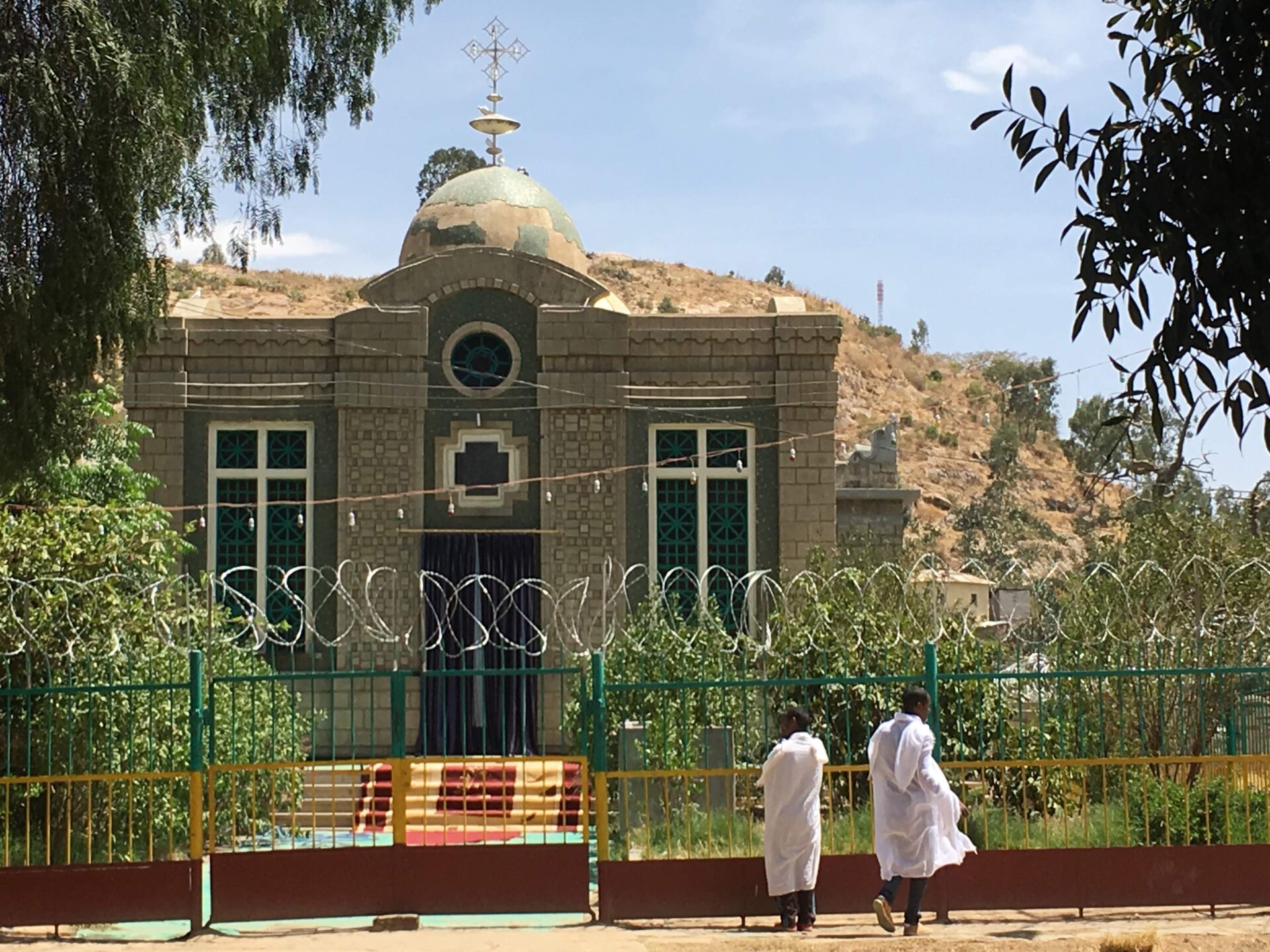Some of my friends chide me about my world travels and refer to me as Indiana Jones. Maybe it’s the hat I wear when I’m traveling, my bizarre adventures or seemingly near death experiences that I always seem to escape from unscathed. If you saw Raiders of the Lost Ark you probably know that Indiana Jones had to journey across the world to get near the Ark of the Covenant, and still never really saw it. Well, that’s one more thing we have in common!
Ethiopians claim that the ark was never lost, as is believed by most historians, but has been in their country for centuries. Whether that’s true or not is a matter of great speculation. According to legend and many historical records, Sheba journeyed from Ethiopia to Jerusalem where she met King Solomon. One thing led to another and when she returned to her country, their son Menelik was born. Menelik journeyed back to meet his father some years later and was accompanied back to Ethiopia by some Israelite “first born”escorts. Unbeknownst to Menelik, his traveling companions “borrowed” the sacred ark of the covenant from the temple.Menelik’s initial anger turned to the resolution that it was part of God’s plan or otherwise such a thing would not have been possible.
Ethiopians claim that for thousands of years, the ancient vessel containing the Ten Commandments “First Edition” has been carefully guarded by the descendants of Menelik. The successive kings have all been of the same lineage of Solomon and Menelik until the last king of Ethiopia, Haile Selassie, who met his demise at the hands of The Derg in 1975. The capital of the kingdom has moved to several cities and the ark has followed before it was moved to it’s present location of Aksum in the northern highlands of the country. No one is allowed to see the ark except for the sole guardian and protector of the holy relic. Even the leader of the Ethiopian church is not allowed admission. One person is appointed to guard the ark and stays within it’s shrine until his death. Sound familiar? Maybe a little like the Indiana Jones movie where the one knight is guarding the Holy Grail? I’m not saying that Steven Spielberg borrowed an idea or two from Ethiopian history, but he might have just stolen that whole bit.
So, how do you get close to the ark of the covenant? First, you’ve got to fly to Ethiopia. It’s easier than you think, with a stopover in Germany or Paris and then on to the capital, Addis Ababa. Even though Ethiopia is situated in the most volatile region of the planet, next to countries such as Yemen, Somalia and Eritrea, the country is very stable, the people are extremely peaceful and Christian. That might come as a surprise for many. The Ethiopians were the second country to adopt Christianity and it is one of the most devoutly Christian countries in the world, in spite of it’s Islamic neighbors. Many of the ancient temples are still in use and biblical verses painted on goat skins from centuries ago are still read by the devout.
You could begin your journey in Bahir Dar, on the Lake Tana. It’s an hour flight from Addis or a grueling 10 hour bus ride. Flights with Ethiopian Airlines are relatively inexpensive and much more pleasant than overland travel. Lake Tana is one of the two sources of the Nile, so theoretically, you could get in a boat and sail all the way to the Mediterranean if there wasn’t borders and dams in the way. What’s special about Lake Tana is that the ark was supposedly hidden on one of the islands for 400 years. It was moved hundreds of years ago, but you can visit the monastery island of Tana Qirqos (as long as you’re not a woman) and walk the grounds where the holy object was allegedly kept from would-be marauders. You can hire a boat and visit several of the monasteries on the various islands, see a few hippos and buy some interesting souvenirs. You won’t see the ark, but you’ll see many stories painted centuries ago adorning the walls that recount biblical and mythological stories from the past.
From Bahir Dar, you fly to Aksum. Aksum is the northernmost city in Ethiopia. It was the center of the Ethiopian kingdom at one time and has several worthwhile places to visit. The monolithic stelae are reminiscent of Egyptian obelisks and one of the most famous sites, there’s a natural pool where Sheba supposedly swam, and King Ezana’s tablet, the Ethiopian equivalent of the Rosetta stone. Taking up the main center of town is St. Mary of Zion, a church built in the 60s that seems much older, made up of several buildings. The most famous of them is the one that never gets visited by anyone. It’s a small cubicle chapel surrounded by barbed wire and security. Only one man is allowed in The Chapel of the Tablet and he is not allowed to leave the grounds until his death. And that’s where your journey ends. You’ll never get any closer to the Ark of the Covenant than this, so enjoy!
You can stand in front of the building, take a selfie with the famous chapel, and hope that the Ark doesn’t melt your face like the Nazi bad guy in Indiana Jones. Is it really in there? Who knows? No one will be able to dispute your claim because there is no proof that it’s there and there’s no proof that it’s not there. I suppose if enough Ethiopians believe in it, it must be true.






Leave a reply
You must be logged in to post a comment.